Before you lace up your hiking boots and hit the trail, let’s talk about something important: wildfires. Yes, you heard me right.
Montana, with its breathtaking landscapes and pristine beauty, isn’t immune to the fiery dance of nature.
Picture this: dense smoke billowing through the air, swirling and dancing under the big, open sky. Montana’s rugged beauty, veiled by a smoky haze, adds an eerie allure.
Let’s not sugarcoat it – wildfires can cause havoc and threaten both the air quality and the safety of our beloved wilderness.
Whether you’re an outdoor enthusiast planning a hike in the wild expanses of Montana or a concerned citizen wanting to stay informed about the current fire conditions, this article is tailor-made for you.
Together, we’ll explore the ignition sources and future conditions that contribute to wildfire outbreaks in Montana.
- Related article: Montana’s Livability
So, grab your compass, brace yourself for the unexpected, and join me as we unravel the captivating world of Montana’s wildfires. Let’s dive in!
Montana’s Wildfire Season
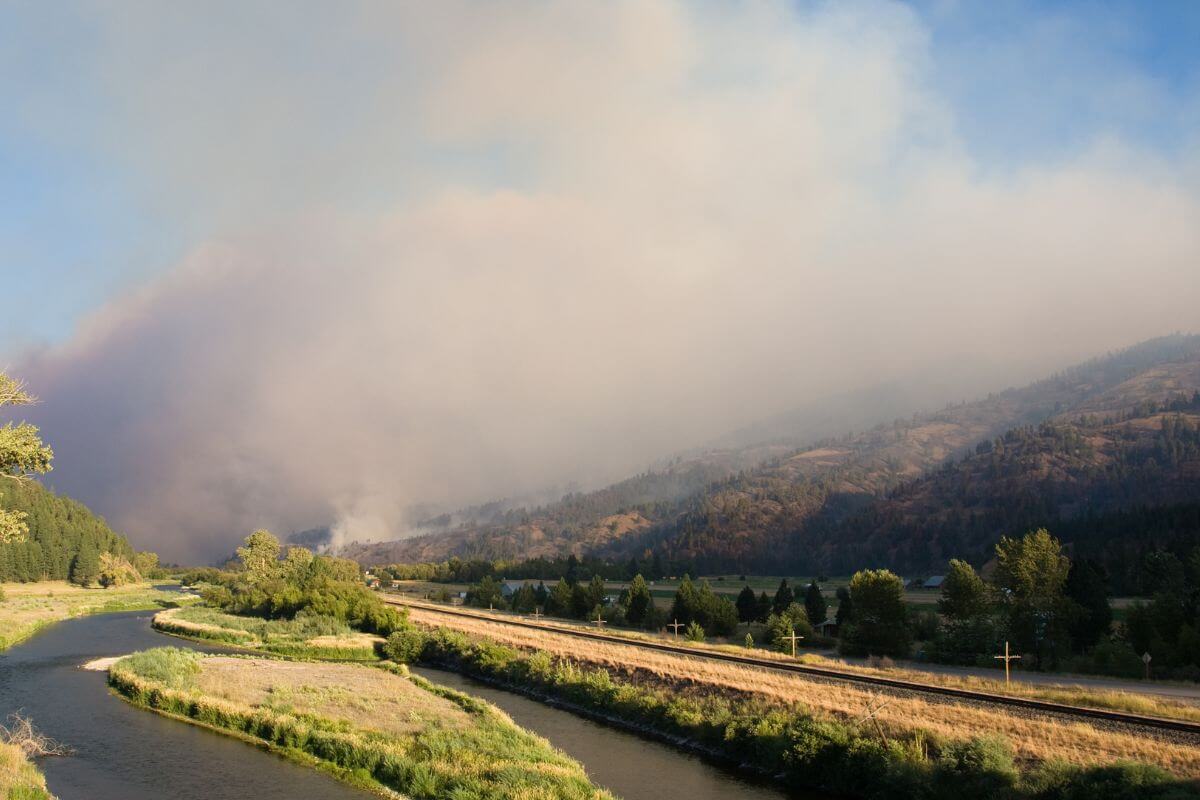
Wildfires, these spontaneous and uncontrolled fires that ravage natural environments such as forests or grasslands are a force to be reckoned with.
They can spread rapidly, consuming everything in their path and posing risks to humans, animals, and even damaging properties.
It’s important to note that wildfires are also an integral component of forest ecosystems, playing a role in creating even-aged stands and altering the environment in natural and significant ways.
The months of May through September are the core of Montana’s forest fire season. During this period, the state experiences a heightened risk of wildfires.
However, wildfires can happen at any time of the year. The duration and severity of the season can vary, depending on factors such as weather conditions and fuel availability.
Drought poses a significant risk factor for wildfires. Vegetation begins to wilt and dry out, reducing moisture content and creating ample fuel for fires to thrive.
Interestingly, drought conditions can sometimes be preceded by an above-average rainfall period, which encourages plant and tree growth before ultimately leading to increased fire risk.
Let’s not forget the Great Fire of 1910. This massive wildfire, also known as the Big Blowup or the Devil’s Broom fire, left a lasting impact, claiming the lives of 87 people, mostly firefighters.
It burned approximately 4,700 square miles across North Idaho, Western Montana, Eastern Washington, and Southeast British Columbia.
The devastation caused by this historic blaze serves as a stark reminder of the importance of preparedness and the tireless efforts of state and federal agencies in mitigating the risks of wildfires.
Causes of Wildfires in Montana

There is a fascinating blend of natural phenomena and human influence in defining the causes of wildfires.
It’s a delicate dance between expansive drought, record heat, and an extended wildfire season that sets the stage for these fiery spectacles.
The Montana Department of Natural Resources and Conservation released a report shedding light on the severity of the current drought.
They revealed that this parched spell is the most intense the state has encountered in over two decades.
For 3 consecutive years, above-average temperatures and below-average precipitation have conspired to create a dryness that seems to swallow the land of Montana.
The convergence of this relentless drought and the ongoing forest health crisis has birthed a potent recipe for wildfires.
In fact, the National Interagency Fire Center reported that over 52,000 wildfires have ravaged the lower 49 states, scorching an astonishing 6.6 million acres.
This represents a 4% increase in the average number of acres burned compared to the previous decade.
While Mother Nature occasionally lends a hand, the vast majority of wildfires in Montana are ignited by us, humans.
Whether through acts of carelessness or unfortunate accidents, our actions often spark the flames that rage through the pristine wilderness.
With Montana’s expansive 93 million acres of unspoiled beauty and ever-changing weather conditions, it’s no wonder that wildfires are a natural occurrence embedded within the fabric of its ecology.
Primary Reasons for Fire Incidents
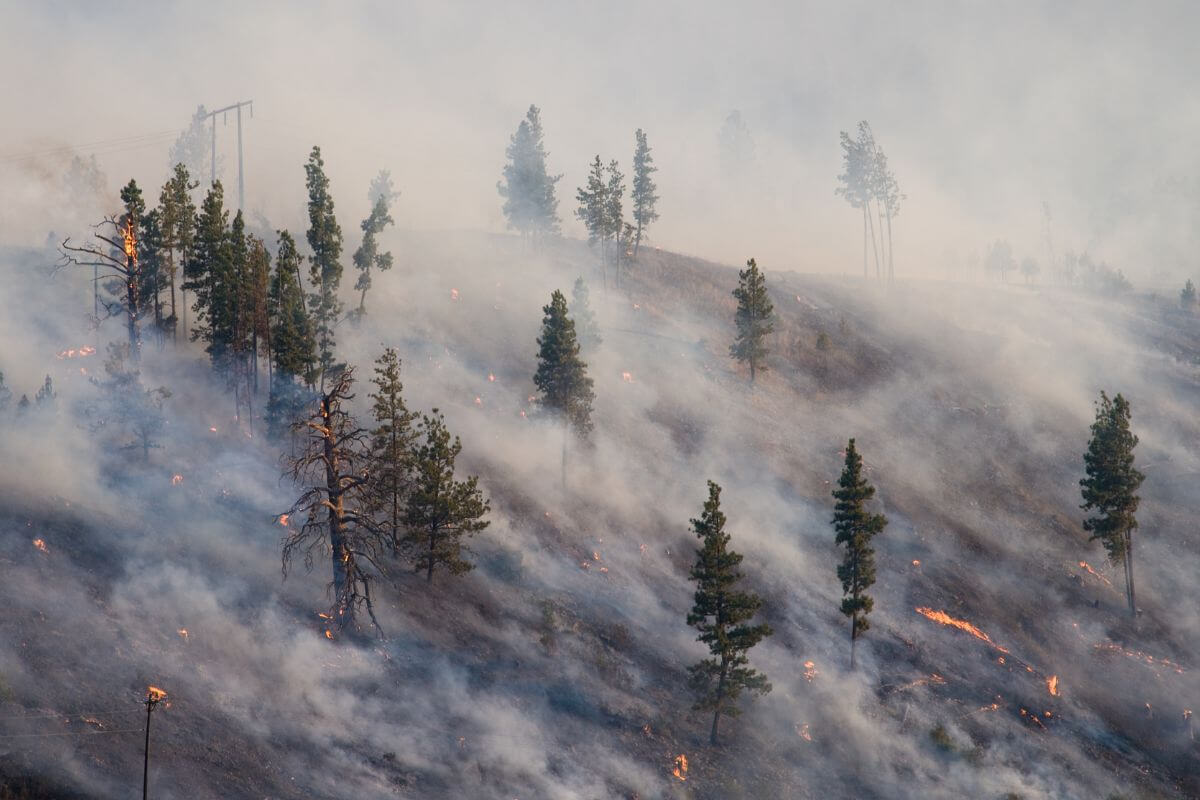
In Montana, humans are responsible for igniting up to 75% of fierce blazes of wildfires.
The primary reasons for human-caused fire incidents are as follows:
- Improper disposal of debris through burning – Inadequate disposal of flammable materials can lead to wildfires.
- Uncontrolled campfires that escape their designated areas – Poorly managed campfires can spread and ignite nearby vegetation.
- Accidental ignition caused by the use of lawn or farm equipment – Sparks from machinery can accidentally start fires in dry conditions.
But it’s not just our actions that contribute to the increasing frequency of wildfires. The changing climate plays a significant role as well.
The following have created a longer wildfire season, providing ample fuel for these ferocious flames:
- Rising temperatures – Global warming dries out vegetation, making it more susceptible to ignition and intensifying wildfires.
- Changing precipitation patterns – Altered rainfall leads to prolonged droughts and dry landscapes, increasing the potential fuel for wildfires.
- Decreasing humidity – Reduced humidity from climate changes leaves vegetation vulnerable to ignition and facilitates faster fire spread.
Current drought conditions across Montana are the result of 3 years of above-average temperatures and below-average precipitation.
While the drought in the early 2000s lasted longer, the current drought is the most severe that Montana has experienced in more than 20 years greatly increasing the risk of wildfires.
Mechanics of How Wildfires Spread
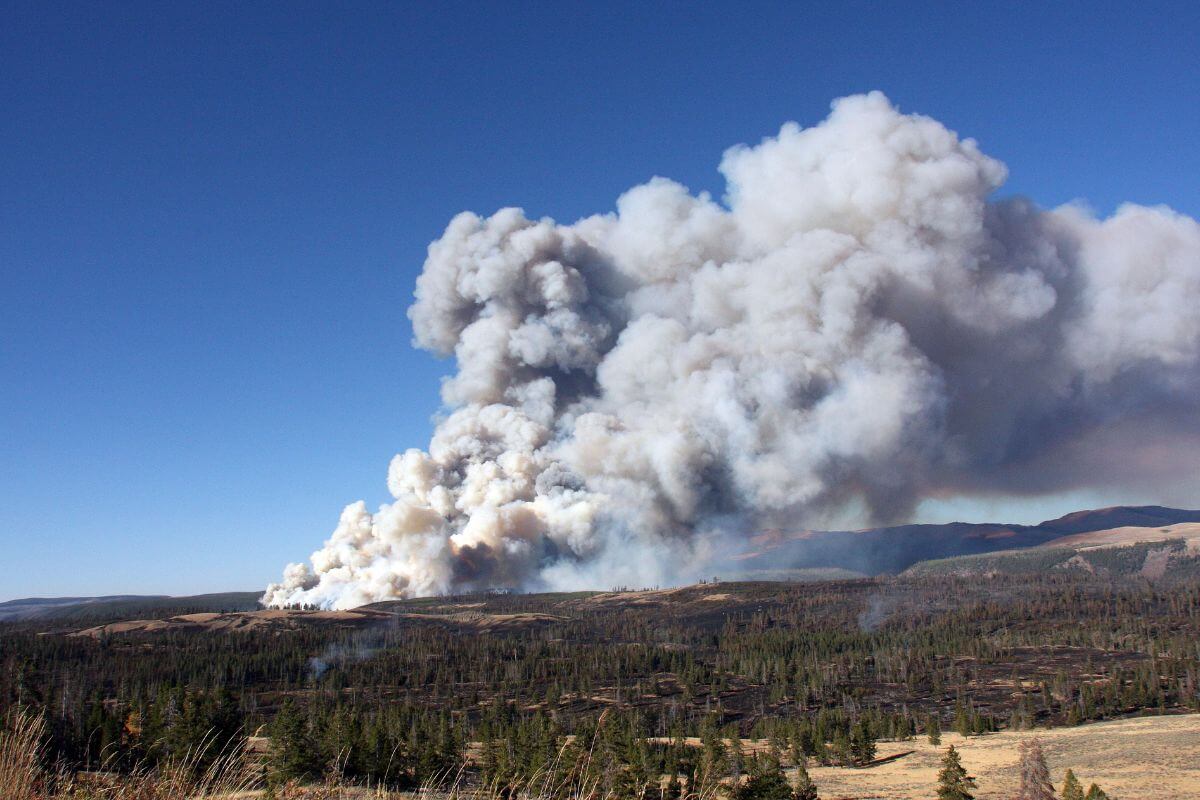
The mechanics behind the rapid spread of fire is a phenomenon that seems to defy logic, yet it unravels with frightening efficiency.
A culmination of factors contributes to this destructive dance, starting with the rising temperatures and bone-dry conditions that have engulfed our state.
Fuel sources play a crucial role in the intensity and spread of wildfires.
- Low Moisture Fuel – Dry and low-moisture fuel burns faster and more intensely
- Grass – Smaller fuel sources like grass can ignite quickly and spread rapidly
- Some Plants – Some plants, with their oils and resins, act as kindling, further adding to the intensity of the fire.
The influence of topography and weather on the spread of fires plays a significant role in shaping the behavior and severity of wildfires.
Both factors interact to create conditions that can accelerate the spread of fires, making firefighting efforts more challenging and increasing the potential for damage to ecosystems, communities, and infrastructure.
Here’s how the weather influences the spread of fire:
- Wind – Wind supplies additional oxygen, causing fires to spread faster.
- High Temperature and Low Humidity – High temperatures and low humidity dry out fuel, leading to more intense wildfires.
- Afternoon Air – Afternoon air, being the hottest, contributes to increased fire intensity.
Here’s how the topography influences the spread of fire:
- Steep Slopes – Steep slopes facilitate faster uphill spread of fires due to rising heat.
- Elevation – Elevation and aspect affect temperature and moisture levels in fuels.
- South-Facing Slopes and Lower Elevations – South-facing slopes and lower elevations receive more sunlight, resulting in faster drying and more intense wildfires.
Montana Wildfire Threat to Communities
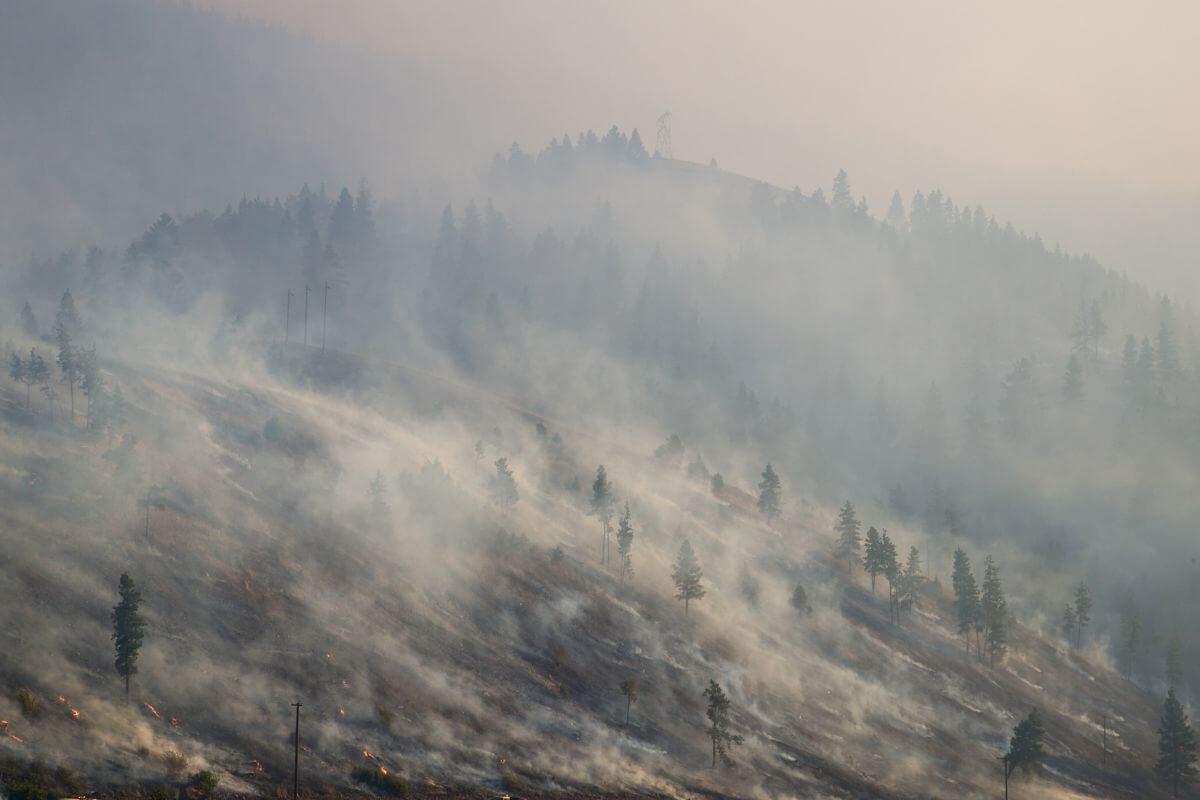
Natural calamities in Montana and the threat of wildfires to the communities cannot be ignored.
The effects of climate change, with rising temperatures and changing precipitation patterns, have created the perfect storm for these destructive blazes.
Combine that with decreased humidity and drier conditions, and we have a recipe for disaster.
The dry, flammable vegetation in the state provides ample fuel for fires to spread rapidly and engulf everything in their path.
It’s a terrifying sight to behold, as homes, businesses, and vital infrastructure become consumed by the flames.
The devastation is all-encompassing, leaving nothing untouched by its destructive force. But it’s not only the physical damage that we need to be concerned about.
Wildfire smoke, containing high levels of fine particulate matter, fills our air, creating a significant air quality issue.
Bowl-shaped valleys in Western Montana are particularly susceptible to this, trapping the smoke and intensifying its impact. The summer air becomes thick with a dense haze, affecting everyone’s health.
Bad air quality and smoke from wildfires can lead to various health effects, including the following:
- Irritation of the Eyes and Respiratory Tract – Wildfire smoke can cause discomfort and breathing difficulties in exposed individuals.
- Reduced Lung Function – Inhalation of wildfire smoke may lead to temporary or lasting impairments in lung capacity.
- Bronchitis – Prolonged exposure to smoke can increase the risk of developing bronchitis, an inflammation of the airways.
- Exacerbation of Asthma and Heart Failure – Wildfire smoke can worsen existing conditions like asthma and heart failure, leading to severe health complications.
- Premature Death – Prolonged exposure to wildfire smoke has been linked to increased mortality rates in affected regions.
- Vulnerable Populations at Higher Risk – Children, pregnant women, and the elderly are particularly susceptible to health issues resulting from smoke exposure during wildfires.
Montana Wildfire Mitigation Efforts and Prevention
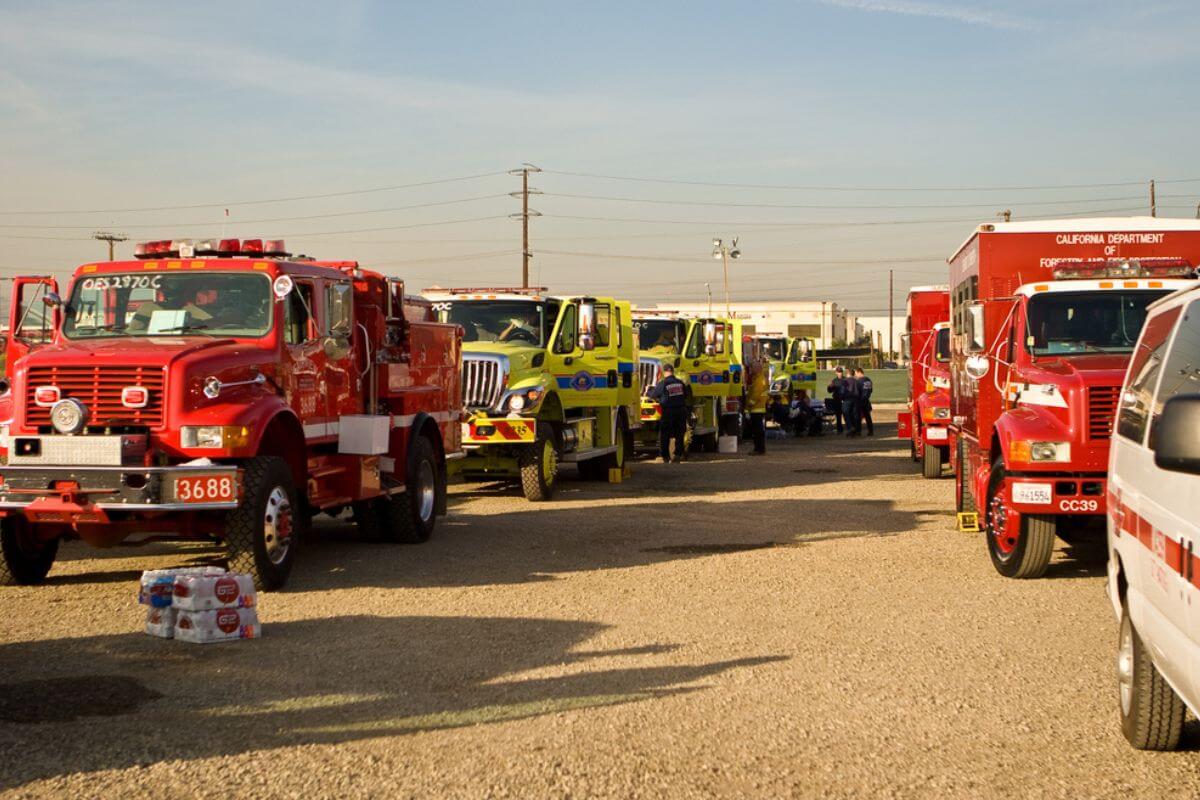
Montana is no stranger to the devastating effects of wildfires. However, there are proactive measures being taken to manage and mitigate the impact of wildfires.
One wildfire mitigation effort is the Hazard Mitigation Grant Program-Post Fire (HMGP-PF), which provides funding to assist communities in implementing hazard mitigation measures after a Fire Management Assistance Grant (FMAG) has been declared.
These mitigation measures aim to reduce the risk of future disasters and protect lives and property. The availability of funding for HMGP-PF is contingent upon the declaration of FMAGs.
Each declared FMAG provides $584,083 of mitigation funding to the state, which is combined into a single funding opportunity for HMGP-PF.
While all eligible sub-applicants can apply for this funding, priority is given to counties that have declared FMAGs.
Eligible applicants for HMGP-PF include:
- States
- Counties
- Territories
- Federally recognized tribal governments
- Private nonprofit organizations.
To be eligible, each applicant must have a current FEMA-approved Hazard Mitigation Plan. The cost share for HMGP-PF is 75% federal funding and 25% local funding.
Montana embraces fire as an inherent aspect of its environment, necessitating that its residents learn to coexist with this natural occurrence.
To safeguard oneself, one’s home, and the community against wildfires, the following actions can be taken:
- Fire Safety Home – Constructing or modifying your home with fire safety measures in mind.
- Reduce Combustible – Implementing measures to reduce combustible materials on your property.
- Increase Awareness – Enhancing awareness and preparedness during periods of heightened fire risk.
- Proper Preparation and Evacuation – Preparing your family and community for the impacts of smoke and the possibility of evacuation.
While fire remains an integral part of Montana’s ecosystem, it is important to note that human activities contribute to 75% of wildfires in the state.
Individuals can help minimize wildfire risk by preventing human-caused ignitions by:
- Properly Managing Burn Piles – Keeping burn piles small and refraining from burning on hot and windy days reduces the risk of igniting wildfires.
- Thoroughly Extinguishing Campfires – Ensuring campfires are completely extinguished after use helps prevent accidental fire starts.
- Responsible Use of Lawn and Farm Equipment – Operating such equipment early in the day during hot and dry conditions lowers the chance of sparks igniting wildfires.
Does Montana Experience Wildfires Final Thoughts
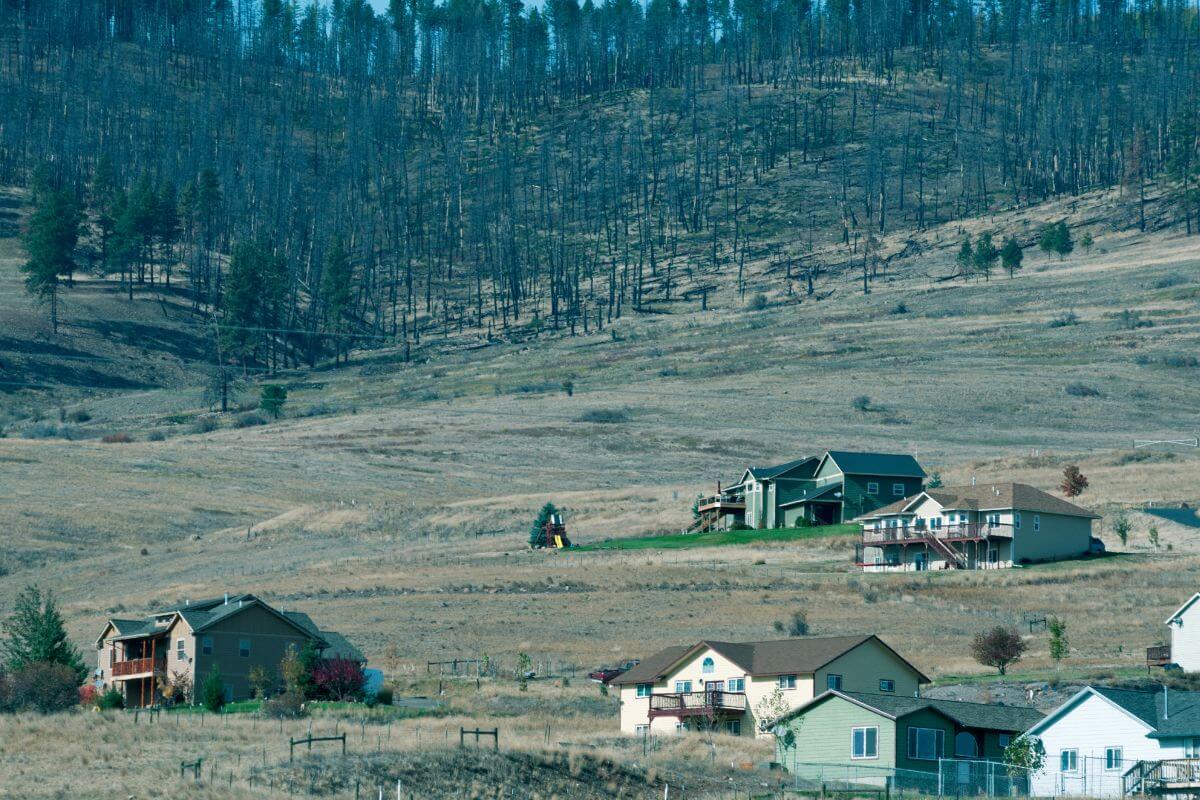
It becomes evident that ongoing management and mitigation efforts are crucial in protecting our beautiful state from the devastating effects of wildfires.
The impact of these fires extends far beyond the acres consumed by flames; it affects the air we breathe, the homes we cherish, and the very essence of our communities.
While we have made significant strides in wildfire prevention and response, it is imperative to consider the challenge that climate change poses for the future.
As temperatures rise and drier conditions prevail, the risk of wildfires escalates, demanding our unwavering attention.
By continually assessing and adapting our strategies, we can stay ahead of the game, fortifying our communities against the threat of wildfires.
This entails investing in cutting-edge technology, fostering collaboration among various agencies, and engaging the public in proactive measures.
We must be prepared not just for the fires of today but also for the fires of tomorrow. As we look ahead, it is essential to stay informed about mile forecasts, fire sizes, and future conditions.
By doing so, we can better understand the changing landscape and make informed decisions regarding prevention and response.
Let us be vigilant, united, and resilient as we navigate the challenges that lie ahead, safeguarding our beloved Montana from the devastating consequences of wildfires.
Does Montana Experience Wildfires FAQs
1. Does Billings Have Wildfire Risk?
Billings faces a significant wildfire risk, with 44,570 properties, accounting for 93% of all properties in the area, being susceptible to wildfire impact within the next three decades.
2. Is It Necessary to “Fire Wise” Your Home or Property?
Being “Fire Wise” and taking steps to prepare your property is crucial for protecting your home from wildfires.
Creating a defensible space of at least 100 feet, free from easily flammable materials, can make a significant difference.
Climate change has extended fire seasons, emphasizing the need for proactive measures, and it’s essential for communities to work together in this effort to safeguard homes and support firefighters.
3. Why Are There So Many Fires in Montana?
The high occurrence of fires in Montana can be attributed to a combination of factors. Rising temperatures and accelerated snowmelt lead to drier conditions, which serve as fuel for wildfires.
Additionally, in the Western region, the number of large wildfires has significantly increased since 1970, and some years experience an extended “wildfire season” that lasts for several months, mainly due to the effects of climate change.
4. What State in the U.S. Has the Most Wildfires?
The state with the highest occurrence of wildfires in the United States is California. In 2021, California experienced over 9,000 individual wildfires, devastating nearly 2.23 million acres of land.
This accounted for approximately 31% of all acres burned by wildfires in the country.
If you’re interested in diving deeper into Montana, stay involved with these articles:
- LGBTQ+ Embraced in Montana
- Montana’s Queer Collectives
- Teams in Montana Sports
- Is Montana Really the Worst
- https://www.ucdavis.edu/climate/definitions/wildfire
- https://dnrc.mt.gov/Forestry/Wildfire/current-fire-information
- https://brand.mt.gov/Programs/Office-Of-Tourism/Fire-Information-for-Travelers
- https://landresources.montana.edu/archives/capstone/2008_Capstone.pdf
- https://cnr.ncsu.edu/news/2021/12/explainer-how-wildfires-start-and-spread/
- https://dnrc.mt.gov/News/dnrc-news/Drought-Conditions-Improve-Following-Two-Years-of-Extreme-Drought-Much-of-Montana-Still-Abnormally-Dry-news-article
- https://dnrc.mt.gov/Forestry/Wildfire/fire-prevention-and-preparedness
- https://des.mt.gov/Grant-Programs/HMGP-Post-Fire
- https://pubmed.ncbi.nlm.nih.gov/29272827/
- https://www.epa.gov/air-research/wildland-fire-research-health-effects-research
- https://www.fs.usda.gov/features/be-fire-wise-preparing-your-home-wildfire-season
- https://nara.getarchive.net/media/fire-wildfire-chino-calif-november-20-2008

